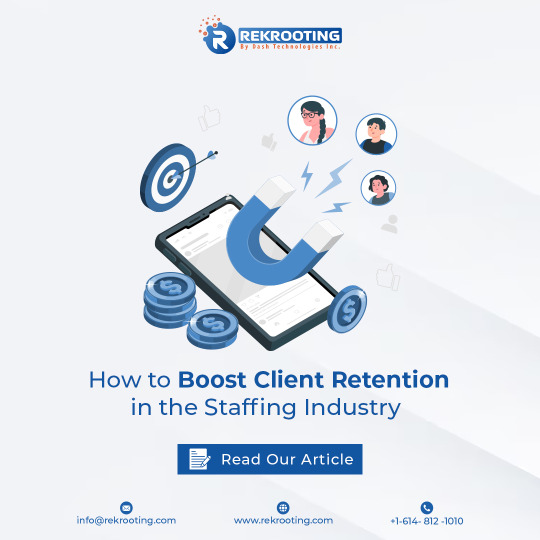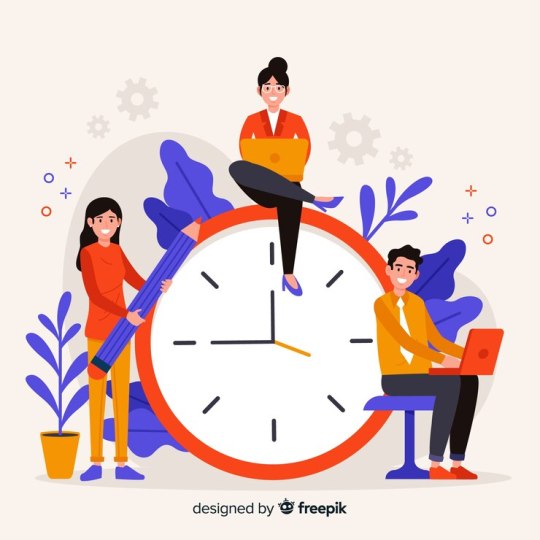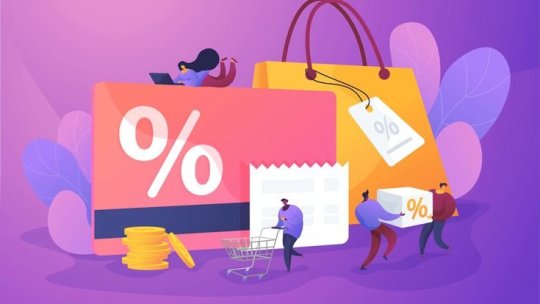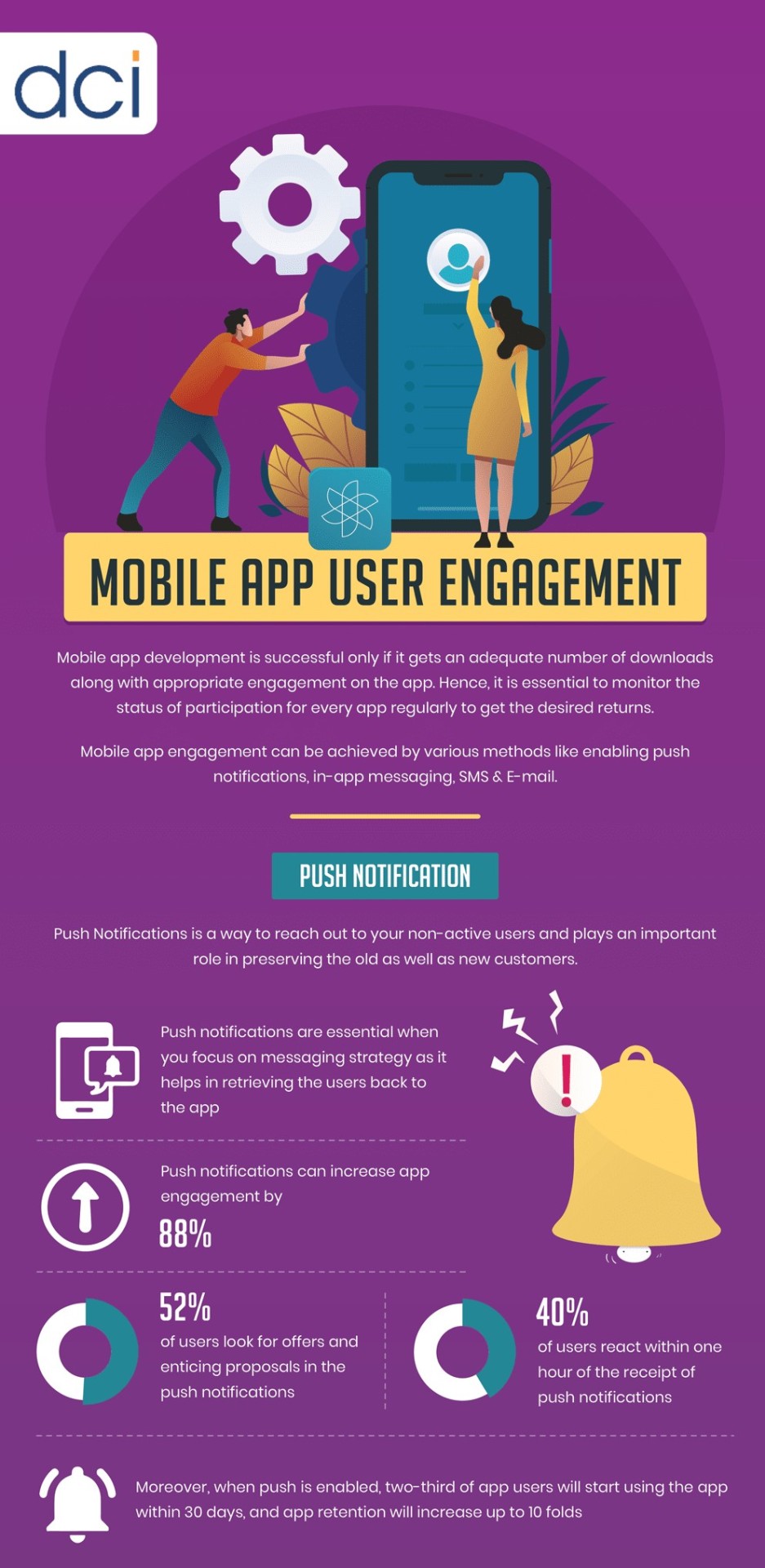#retentionstrategies
Explore tagged Tumblr posts
Text

Building long-lasting relationships requires several key components, including aggressively seeking feedback, providing outstanding service, communicating effectively, understanding your clients' needs, and cultivating personal ties.
These relationships, which are based on satisfaction and trust, not only promote growth but also make a substantial contribution to a company's total profitability.
Read our article on powerful ways to boost client retention here https://bit.ly/47IEZzL
#ClientRetention #StaffingIndustry #BusinessGrowth #ClientSatisfaction
#ClientEngagement #CustomerLoyalty #RetentionStrategies
#ClientRetention#StaffingIndustry#BusinessGrowth#ClientSatisfaction#ClientEngagement#CustomerLoyalty#RetentionStrategies#staffing#recruitment
6 notes
·
View notes
Text
Fixing Talent Retention: 5 Steps to Build a Stronger Team

Tired of high turnover rates? Fixing talent retention doesn’t have to be so hard. It's all about the right strategies to keep your best employees engaged and loyal.
Here’s a quick rundown of 5 steps to fix your talent retention struggles:
• Focus on hiring for potential, not just experience. • Create an onboarding process that makes new hires feel like part of the team. • Support career growth through mentorship and skill development. • Foster a culture where everyone feels included and valued. • Recognize your employees’ contributions regularly to keep them motivated.
If you’re ready to start attracting top talent and improving your retention, these tips will set you on the right track. No more losing employees to competitors—get ahead of the game now! 🌱
0 notes
Text
5 Most Ignored Aspects in Software Sales

Introduction
The software industry is growing rapidly, with global software revenues expected to surpass $1.4 trillion by 2025. However, despite this booming market, many software companies struggle with sales. While pricing, marketing, and product features often take center stage, some critical aspects of software sales are frequently overlooked.
Ignoring these elements can lead to lost deals, increased customer churn, and poor long-term business growth. In this blog, we’ll uncover five commonly ignored aspects in software sales and how addressing them can help companies boost revenue and customer satisfaction.
1. Understanding the Customer’s Pain Points
One of the biggest mistakes in software sales is focusing too much on the product rather than the problems it solves. Sales teams often rely on pre-scripted pitches and generic feature lists, assuming the software’s capabilities will impress customers.
Why this is a problem:
o Not all customers have the same challenges.
o A one-size-fits-all pitch fails to connect with buyers.
o Customers buy solutions, not just software.
What to do instead:
o Conduct discovery calls to understand customer pain points.
o Customize your sales pitch based on the specific needs of each prospect.
o Use case studies and real-world examples to show how your software solves problems.
Example: A SaaS company selling CRM software saw a 25% increase in conversions after shifting from a feature-based sales pitch to a problem-solving approach tailored to each client’s industry.
2. The Role of After-Sales Support & Customer Success
Many software sales teams consider their job done once the deal is closed. However, failing to support customers post-purchase can lead to low retention rates and poor brand reputation.
Why this is a problem:
o Customers need training and onboarding to use the software effectively.
o Poor post-sale support increases churn.
o 86% of customers say good customer service turns them into repeat buyers (HubSpot).
What to do instead:
o Offer personalized onboarding to ensure customers get value from the software.
o Provide proactive customer success teams to assist clients before they experience issues.
o Use automated check-ins and feedback loops to track customer satisfaction.
Example: A cloud security software provider reduced churn by 40% by implementing a structured onboarding process with dedicated account managers.
3. Value-Based Selling Over Feature Dumping
Sales reps often get excited about product features and overwhelm prospects with technical jargon and long lists of functionalities. However, customers don’t care about how many features your software has—they care about how it benefits them.
Why this is a problem:
o Too many features can confuse and overwhelm buyers.
o Customers may not see how features translate into actual value.
o A feature-focused pitch can lead to price objections.
What to do instead:
o Sell outcomes, not just features. Instead of saying, “Our software has AI-powered automation,” say, “Our software reduces manual work by 40%.”
o Highlight ROI (Return on Investment) by explaining how the software saves time, reduces costs, or increases efficiency.
o Use real-world scenarios to show how the software solves problems.
Example: A project management software company increased sales by 30% after shifting from a feature-focused sales approach to a value-driven sales strategy that emphasized productivity gains for businesses.
4. Leveraging Data and Customer Insights
Many software sales teams fail to use data effectively, relying on guesswork instead of insights. By leveraging customer analytics, CRM data, and behavioral insights, companies can make smarter sales decisions.
Why this is a problem:
o Sales teams miss cross-sell and upsell opportunities.
o Lack of customer insights leads to poor engagement strategies.
o Decisions based on intuition rather than data are less effective.
What to do instead:
o Use CRM tools to track customer interactions and preferences.
o Implement predictive analytics to identify high-potential leads.
o Use data-driven personalization to tailor offers based on customer behavior.
Example: A subscription-based software company boosted revenue by 22% by using customer data to identify the best time to offer upgrade recommendations.
5. Building Long-Term Relationships vs. One-Time Deals
Many software sales teams focus on closing the deal rather than nurturing long-term relationships. However, retaining existing customers is 5x cheaper than acquiring new ones.
Why this is a problem:
o Overemphasis on new sales leads to high customer churn.
o Companies miss opportunities to increase lifetime value (LTV).
o Poor relationship management leads to negative word-of-mouth.
What to do instead:
o Prioritize customer engagement and relationship-building.
o Offer loyalty programs, exclusive webinars, and value-added services.
o Encourage referrals and testimonials from satisfied clients.
Example: A software company increased referrals by 50% after introducing a loyalty program rewarding long-term customers with discounts and early access to new features.
Conclusion
Software sales require more than just a great product and a strong pitch. Understanding customer pain points, providing excellent post-sales support, focusing on value rather than features, using data effectively, and building long-term relationships is crucial for sustained success.
By addressing these five often-ignored aspects, software companies can not only boost their conversion rates but also improve customer satisfaction and retention.
Looking for more ways to stay ahead in the digital world? Explore what we’re building. Visit our website!
#SoftwareSales#CustomerSuccess#ValueSelling#BusinessGrowth#CustomerRetention#TechSales#SalesStrategy#CustomerEngagement#DataDriven#LongTermGrowth#SoftwareIndustry#SalesPerformance#CustomerInsights#RelationshipBuilding#RetentionStrategies
0 notes
Text
Keeping Your Hourly Workforce: Understanding Their Needs for Better Retention

High turnover among hourly workers presents a persistent challenge for many organizations. The costs associated with constant recruitment, onboarding, and training can significantly impact the bottom line. Understanding what truly matters to this vital segment of the workforce is crucial for developing effective retention strategies. Rang Technologies, a workforce management solutions provider, offers insights into the key elements that drive hourly worker satisfaction and contribute to longer tenures.
1. Equitable and Competitive Compensation: While it may seem fundamental, offering fair and competitive wages remains a primary concern for hourly employees. Providing compensation that aligns with or surpasses prevailing market rates in their industry and location is essential for both attracting and retaining qualified individuals. Rang Technologies Inc. assists businesses in conducting thorough market analysis to ensure their pay structures are competitive and appealing. This is especially pertinent for companies hiring near me, as local competition for talent can be fierce.
2. Consistent and Adaptable Scheduling: The ability to plan their lives outside of work is a major factor for hourly workers. Unpredictable or fluctuating schedules can create significant difficulties in managing personal obligations and maintaining a healthy work-life balance. Offering consistent schedules and incorporating flexibility whenever feasible demonstrates consideration for employees’ personal circumstances and boosts job satisfaction. Rang Technologies provides workforce management tools that streamline scheduling processes and facilitate communication regarding shift preferences and availability.
3. Pathways for Professional Growth: Hourly workers, just like salaried employees, seek opportunities for advancement and skill enhancement. Providing access to training programs, mentorship initiatives, and clearly defined career progression paths can significantly improve retention rates. Rang Technologies, as a talent company, recognizes the value of investing in employee development and offers consulting services to help businesses design and implement effective learning and growth opportunities.
4. A Respectful and Supportive Workplace Culture: A positive and inclusive work environment where employees feel valued, respected, and heard is paramount. This includes fostering open communication channels, ensuring fair and equitable treatment for all, and providing regular recognition for contributions. Rang Technologies, operating as a recruitment agency and employment agency near me, connects businesses with candidates who prioritize a positive and supportive work culture.
5. Meaningful Benefits and Perks: While competitive wages are a key factor, offering a comprehensive benefits package can significantly enhance a company’s appeal to hourly workers. Benefits such as health insurance, paid time off, retirement savings plans, and other perks can contribute to a stronger sense of security and loyalty. This is particularly relevant in a competitive hiring landscape where companies hiring are seeking ways to attract and retain the best talent. Rang Technologies helps companies with their hiring agency needs and finding talent. For recruiting firms, this is a very important factor. Rang Technologies can also provide consultancy company and consulting services to help your business optimize its strategies.
By prioritizing these key elements, organizations can cultivate a more attractive and supportive work environment for their hourly workforce, leading to improved retention, reduced turnover costs, and a more stable and productive team. Rang Technologies, with its expertise in workforce management strategies, assists businesses in developing and implementing effective solutions to attract, retain, and empower their hourly employees.
#HourlyWorkforce#EmployeeRetention#WorkforceManagement#EmployeeSatisfaction#RetentionStrategies#HourlyEmployees#WorkplaceCulture#EmployeeEngagement#StaffRetention#LaborForce
0 notes
Text
youtube
How Draup Transformed the Talent Acquisition Strategy for one of the Largest Retailers in the US
#talentintelligence#recruitmentstrategy#dataanalytics#talentacquisition#hrtech#workforcemanagement#hrsolutions#datadriveninsights#retentionstrategies#retention#workforceplanning#recruitment#businessintelligence#talentoptimization#hrpartnerships#strategicplanning#Youtube
0 notes
Text
What impact does CRM software have on customer satisfaction and retention in insurance?
Insurance CRM software significantly enhances customer satisfaction and retention by offering tailored solutions for customer-centric engagement:
Personalized Experiences:
Provides insights into customer preferences and behavior for personalized policy recommendations and services.
Builds stronger customer relationships by addressing individual needs effectively.
Proactive Communication:
Automates reminders for policy renewals, claims updates, and premium payments.
Ensures timely and relevant interactions, boosting customer trust.
Streamlined Service:
Centralizes customer data for quick access by agents and support teams.
Resolves customer queries faster, improving service efficiency.
Improved Accessibility:
Offers self-service portals for customers to access policy details and track claims.
Enhances customer satisfaction with 24/7 availability.
Retention Strategies:
Tracks customer feedback and identifies churn risks.
Implements targeted campaigns for retention and cross-selling opportunities.
Data-Driven Insights:
Analyzes customer interactions to continuously refine services.
Enhances decision-making for long-term customer loyalty.
Mindzen’s Insurance CRM Software empowers insurers to provide superior customer experiences and foster retention. Discover more: https://mindzen.com/what-is-a-crm-in-insurance/.
#InsuranceCRM#CRMSoftware#CustomerRetention#InsuranceTech#CustomerSatisfaction#DigitalInsurance#CRMForInsurance#PolicyManagement#InsuranceAutomation#CustomerEngagement#InsuranceSolutions#RetentionStrategies#CRMBenefits#InsuranceTechnology#CustomerSuccess#InsuranceInnovation#CRMFeatures#DataDrivenInsurance#CustomerSupportTools#InsuranceCRMSoftware#CustomerCentricInsurance#PolicyRenewalAutomation#InsuranceEfficiency#MindzenCRM#DigitalTransformation#CustomerInsights#CRMImpact#InsuranceTools#PolicyManagementSoftware#InsuranceRetention
0 notes
Text
Building Retention with Personalized Rewards and Offers
In 2025, customer loyalty isn’t just earned—it’s nurtured with personalized rewards and tailored offers. 🎁✨ By understanding what your customers truly want, you can keep them coming back for more, time and time again!
💡 How to boost retention:
Loyalty programs 🛍️ – Reward repeat customers with points or perks.
Custom discounts 💸 – Offer deals based on purchase history.
Exclusive experiences 🌟 – Make customers feel valued with VIP-only offers.
Want to master the art of retention? Read the full article: Building Retention with Personalized Rewards and Offers
✨ Turn one-time buyers into lifelong fans!

#CustomerRetention#PersonalizedOffers#LoyaltyPrograms#CustomerEngagement#MarketingTrends2025#CustomerLoyalty#RetentionStrategies#BusinessGrowth
0 notes
Text
Retaining Top Executive Talent: A Must for UAE Businesses
Losing a top executive can disrupt your organization, leading to financial strain, knowledge gaps, and lowered morale. In competitive markets like Dubai and Abu Dhabi, retaining senior leadership is vital to maintaining stability and driving growth. Today’s executives seek flexibility, growth opportunities, and supportive work environments—factors many companies overlook, resulting in costly turnover.
Why Leadership Turnover Hurts
Financial Costs: Recruitment and onboarding expenses for C-level roles are steep, especially in the UAE.
Productivity Delays: New executives take years to match the impact of seasoned leaders.
Knowledge Drain: Critical expertise walks out the door, leaving gaps in strategy.
Morale Impact: Leadership exits unsettle teams and erode confidence.
7 Steps to Retain Executives
Provide Purpose: Show leaders how their roles drive company success.
Foster Culture: Build an inclusive, transparent, and values-driven workplace.
Stay Competitive: Offer attractive compensation and benefits.
Enable Growth: Create opportunities for leadership development.
Encourage Flexibility: Promote work-life balance with remote options.
Recognize Efforts: Celebrate contributions through formal and informal recognition.
Offer Feedback: Engage in regular, meaningful performance discussions.
MS: Your Partner for Executive Search in the UAE
At MS, we specialize in executive recruitment services in Dubai and Abu Dhabi, helping organizations secure top leadership talent. Our solutions align exceptional executives with your vision, ensuring long-term success.
Build a leadership team that drives innovation with MS.
#ExecutiveSearch#LeadershipRecruitment#CLevelHiring#TopTalent#ExecutiveSearchUAE#LeadershipInDubai#AbuDhabiExecutives#HiringInUAE#CorporateLeadership#TalentRetention#FutureLeaders#BusinessSuccess#WorkplaceCulture#RetentionStrategies#CareerGrowth
0 notes
Text
Boost Your Memory: Top Retention Strategies
Struggling to remember names? 🧠 Try these top retention strategies and boost your memory like never before! 🚀 No more blank stares! 😂📚 #MemoryBoost #RetentionStrategies #MindGains #BrainPower #CognitiveSkills #MemoryMagic #MindTraining #LolMemories
Memory is a key part of who we are. I’ve learned that good memory strategies can change our lives. With so much info around us, we need ways to keep our minds sharp. Studies show that exercise makes our memory better. It grows the part of our brain for learning. Meditation also helps us remember things better. Eating right, with foods that are good for our brain, is important too. Enough sleep…
#BrainHealth#BrainPower#CognitiveEnhancement#EffectiveStrategies#MemoryBoost#MemoryImprovement#MemoryTechniques#MindMastery#MindTraining#RetentionStrategies
0 notes
Text
The Power of Product Upgrades: How to Elevate Customer Satisfaction

In today’s fast-paced market, customer expectations are constantly evolving. To keep up, businesses must continuously improve their products to meet user demands. Product upgrades are a powerful way to do this—not only can they enhance customer satisfaction, but they can also foster loyalty and long-term growth. Here's how upgrading your products can take customer satisfaction to the next level.
1. Address Pain Points
Customers appreciate upgrades that solve real problems. Whether it's improving usability, adding a highly requested feature, or enhancing performance, addressing customer pain points through upgrades shows you’re listening to feedback. This makes users feel valued and understood, resulting in higher satisfaction.
2. Deliver Added Value
A successful upgrade isn’t just about fixing issues—it’s about adding new value. Whether it's a feature enhancement, design update, or performance boost, these improvements can surprise and delight customers, making them feel like they're getting more than they initially paid for.
3. Create a Seamless User Experience
Upgrades that streamline the user experience or improve interface design can significantly boost satisfaction. By reducing friction points and creating smoother interactions, users enjoy a more intuitive and enjoyable product, which keeps them coming back.
4. Foster a Sense of Progress
When customers see that a product is continuously evolving and improving, it creates a sense of progress and innovation. This not only builds excitement but also strengthens trust in your brand’s commitment to long-term value. A customer who feels they're part of something dynamic is more likely to remain loyal.
5. Build Loyalty Through Consistent Upgrades
Regularly releasing thoughtful product upgrades shows that you care about keeping your customers happy. Over time, this builds brand loyalty and strengthens customer relationships. A company that actively invests in improving its products demonstrates reliability, making customers more inclined to stay.
6. Encourage Customer Feedback
One of the best ways to elevate customer satisfaction through upgrades is by actively seeking and incorporating customer feedback. When users see their suggestions being implemented, they feel directly connected to the product's evolution, creating a sense of ownership and satisfaction.
7. Set Clear Expectations
Clear communication about product upgrades is key to boosting satisfaction. Let your customers know what’s changing, how it benefits them, and when they can expect it. Managing expectations ensures there are no surprises and that customers fully understand the value of the upgrade.
Outcome
The power of product upgrades lies in their ability to transform the customer experience, turning users into loyal advocates. By addressing pain points, adding value, and continuously improving the user experience, businesses can elevate customer satisfaction and maintain long-term success.
#ProductUpgrades#CustomerSatisfaction#ProductInnovation#CustomerLoyalty#UpgradeStrategy#BusinessGrowth#CustomerExperience#RetentionStrategies
0 notes
Text
Unlock the secrets to winning with customer retention. Learn effective techniques to enhance customer loyalty and drive long-term business growth.
#CRM#CustomerLoyaltyPrograms#Customerrelationshipmanagement#CustomerRetention#loyaltyandretention#LoyaltyPrograms#retentionprograms#retentionstrategies#PRMMarketingServices
0 notes
Text
Strategies to Crack the Code for Improved Presentation Retention Rates
1.What is the retention rate of presentations?
The retention rate of presentations refers to the percentage of information that an audience retains after attending a presentation. Research indicates that retention rates can vary significantly based on several factors, including the presentation style, the use of visual aids, and audience engagement techniques. On average, studies suggest that individuals retain approximately 10% of the information presented in a traditional lecture format, whereas interactive presentations that incorporate storytelling or multimedia can enhance retention rates to upwards of 60%. Understanding these dynamics is crucial for professionals seeking to optimize their communication strategies and ensure that key messages resonate effectively with their audiences.
2.What is the best practice retention rate?
The best practice retention rate varies by industry, but a general benchmark is typically around 85% to 90% for most sectors, particularly in service-oriented businesses. Retention rates reflect an organization's ability to maintain its customer base and foster loyalty, which is crucial for long-term success. High retention rates often indicate effective customer engagement strategies, exceptional service quality, and a strong understanding of client needs. Organizations should continually assess their retention metrics, implement regular feedback loops, and adapt their offerings accordingly to optimize customer satisfaction. Ultimately, striving for a retention rate above the industry average can provide a significant competitive advantage.
3.What are retention strategies?
Retention strategies are systematic approaches employed by organizations to enhance customer loyalty and reduce churn rates. These strategies encompass a variety of tactics aimed at fostering strong relationships with customers, ensuring their continued engagement with the brand. Key components include personalized communication, loyalty programs, exceptional customer service, and regular feedback mechanisms to understand customer needs. By analyzing customer behavior and preferences, businesses can tailor their offerings and experiences, thereby increasing satisfaction and retention. Ultimately, effective retention strategies not only contribute to a stable revenue stream but also promote positive word-of-mouth, enhancing the overall brand reputation in a competitive marketplace.
4.What is an effective technique for improving retention?
An effective technique for improving retention is the use of spaced repetition, a learning strategy that incorporates increasing intervals of review over time. This method leverages the psychological spacing effect, which enhances memory consolidation and long-term retention of information. By revisiting material at strategically spaced intervals, learners can reinforce knowledge, reduce cognitive overload, and combat the forgetting curve. Implementing spaced repetition through digital flashcards or structured review schedules allows individuals to personalize their learning experience and track progress. This approach not only promotes deeper understanding but also fosters a more engaging and effective learning environment, ultimately leading to improved retention outcomes.
5.How to create a retention plan?
Creating a retention plan involves several strategic steps to ensure long-term customer loyalty and satisfaction. Begin by Analysing customer data to identify patterns in behavior and preferences. Next, segment your customer base to tailor retention strategies effectively. Implement personalized communication, offering targeted promotions or incentives that resonate with different segments. Regularly solicit feedback through surveys and direct outreach to understand customer needs and pain points. Additionally, establish a loyalty program that rewards repeat business and fosters engagement. Finally, continuously monitor retention metrics to assess the plan’s effectiveness, allowing for adjustments and improvements to enhance customer experience and retention over time.

https://visualsculptors.com/our-portfolio/
0 notes
Text
Build Strong Connections with JPP Tech's Email Marketing Services
Email marketing is a powerful tool for building and nurturing customer relationships. JPP Tech provides comprehensive email marketing services that include strategy development, campaign creation, and performance analysis.

Our personalized email campaigns are designed to engage your audience, drive conversions, and enhance customer loyalty. By delivering relevant and valuable content, we help you achieve higher open rates and click-through rates. Strengthen your customer connections with JPP Tech's effective email marketing services.
#emailmarketing#marketing#digital marketing#EmailMarketing#CustomerEngagement#RetentionStrategies#PersonalizedMarketing#JPPTech
0 notes
Text
Churn Analysis: Techniques and Tools, Applications in Customer Retention
In the competitive world of business, retaining customers is as crucial as acquiring new ones. Churn analysis, a process used to identify customers who are likely to discontinue using a product or service, plays a pivotal role in customer retention strategies. This article explores the various techniques and tools used in churn analysis and its applications in enhancing customer loyalty. Additionally, it emphasizes the importance of mastering these techniques through a comprehensive data analytics course.
Techniques and Tools for Churn Analysis
Churn analysis involves a range of techniques and tools designed to predict and understand customer behavior. Here are some key methods:
Predictive Modeling: This technique uses historical data to forecast future customer behavior. Common models include logistic regression, decision trees, and random forests. These models help in identifying patterns that indicate a likelihood of churn.
Cohort Analysis: This method segments customers into groups (cohorts) based on shared characteristics or experiences within a particular time frame. By analyzing these cohorts, businesses can identify trends and factors contributing to churn.
Survival Analysis: Also known as time-to-event analysis, this technique estimates the time until a customer churns. It is useful for understanding the lifecycle of a customer and identifying critical points where intervention might prevent churn.
Customer Segmentation: Dividing customers into distinct groups based on demographics, behavior, or other criteria allows for more targeted retention strategies. Techniques like K-means clustering and hierarchical clustering are commonly used for segmentation.
Machine Learning Algorithms: Advanced machine learning algorithms such as neural networks, support vector machines, and gradient boosting can handle complex and high-dimensional data, providing more accurate churn predictions.
Text Analysis: For businesses with large amounts of customer feedback in textual form, natural language processing (NLP) can be used to analyze sentiments and identify churn indicators from reviews, social media, and support tickets.
A data analytics course often covers these techniques in detail, providing hands-on experience with tools like Python, R, SAS, and specialized software such as Tableau and Power BI. This training is crucial for professionals aiming to excel in churn analysis and customer retention.
Applications in Customer Retention
Implementing churn analysis has numerous applications in customer retention, including:
Targeted Marketing Campaigns: By identifying customers at risk of churning, businesses can create personalized marketing campaigns to re-engage them. Offers, discounts, and personalized messages can significantly reduce churn rates.
Enhanced Customer Service: Understanding the reasons behind customer churn allows companies to improve their customer service strategies. Proactive measures, such as addressing common pain points and improving the customer experience, can enhance retention.
Product Improvement: Churn analysis can highlight features or services that lead to dissatisfaction. Businesses can use this information to make product improvements and enhance customer satisfaction.
Loyalty Programs: Identifying at-risk customers enables businesses to develop targeted loyalty programs that incentivize continued use. Reward points, exclusive benefits, and early access to new features can help retain valuable customers.
Customer Feedback Loop: Regularly analyzing churn data helps create a feedback loop where continuous improvements are made based on customer behavior and preferences. This dynamic approach ensures that customer retention strategies evolve with changing customer needs.
Resource Allocation: By predicting churn, businesses can allocate resources more efficiently, focusing efforts on retaining high-value customers and optimizing their overall retention strategies.
Conclusion
Churn analysis is a vital component of modern business strategies, offering valuable insights into customer behavior and helping to devise effective retention strategies. By leveraging techniques like predictive modeling, cohort analysis, and machine learning, businesses can significantly enhance their ability to retain customers. For professionals looking to specialize in this area, a data analytics course provides the essential skills and knowledge to implement churn analysis successfully.
#ChurnAnalysis#CustomerRetention#DataAnalytics#PredictiveModeling#MachineLearning#CustomerLoyalty#DataScience#BusinessIntelligence#CustomerExperience#AnalyticsTools#DataAnalyticsCourse#TechSkills#CustomerInsights#DataDriven#RetentionStrategies#MarketingAnalytics
0 notes
Text
Employer Value Proposition (EVP): Your Comprehensive Guide
Dive into the essentials of crafting a compelling Employer Value Proposition (EVP) to elevate your organization's talent acquisition and retention efforts. Learn about the key components of an EVP and its transformative potential in shaping employer branding strategies.
0 notes
Text

Mobile App User Engagement
Mobile app engagement is the metric that provides an insight into the success of an application. It describes the intensity of activity on an application. In simpler terms, it monitors the frequency of any user getting active on a particular application.
The Android ecosystem has grown enormously in the last two years, having more than a million installs every month. The recorded growth rate is 35% since last year. Presently, there are two billion monthly active Android devices adding on to the engagement.
Talking about iOS, it has come a long way since 2008. In 2018, Tom Cook announced 500 million weekly visitors to the App Store; still, Android remains the leader in this market with a higher number of developers and applications.
The infographic provide readers with few importance of Push notifications, In-app messaging, SMS, E-mail and goes on to explain the advantage of incorporating mobile app user engagement effectively in a few beautifully illustrated steps.
Below our mobile app marketing company have created an infographic rich with data and insights on mobile app user engagement. This is not just to help you understand the concept better, but also create a wider awareness so that more businesses can benefit from this form of marketing.
For More Information : Click here
#MobileApps#UserEngagement#AppDevelopment#DigitalMarketing#MobileStrategy#CustomerRetention#UserExperience#AppEngagement#RetentionStrategies#MobileTech
0 notes